The author has done some analysis, and has mainly analyzed and introduced the development of all-solid-state battery technology based on the perspective of consumer electronics. In the past two years, all solid-state battery technology has been further developed, and electric vehicle-power battery is now a hot spot for everyone. Therefore, as a sequel to the previous work, this paper will focus on the power battery from the perspective of the power battery to analyze the advantages and disadvantages of solid battery technology for power batteries. In the previous work, the author has preliminarily summarized the advantages and disadvantages of all-solid-state batteries. Here again, the analysis is as follows: One of the advantages: light - high energy density. The reason for the increase in energy density is firstly that the electrolyte used is less/thinner and thinner; then the solid electrolyte (especially represented by glass or ceramic electrolyte) has a wide electrochemical window, so it can be more compatible. Voltage positive electrode materials (such as high nickel positive electrode, nickel manganese spinel positive electrode, etc.); not only that, the safety of all solid state batteries (advantage 1), high voltage can also make the battery management system BMS more simplified, so the final installation The battery system energy density of the car can be increased. On December 29, 2016, the Ministry of Finance, the Ministry of Science and Technology, the Ministry of Industry and Information Technology, and the National Development and Reform Commission jointly issued the Notice on Adjusting the Financial Subsidy Policy for the Promotion and Application of New Energy Vehicles, which clearly stipulated the power battery subsidy to increase the quality of the power battery system. The energy density requirement is not less than 90Wh/kg, and the subsidy is 1.1 times higher than 120Wh/kg.†It can be seen that high energy density has become the development direction of power batteries, and in this respect, solid-state batteries have great development. Space and potential. Comparison of traditional battery and all solid state battery electrolyte/liquid The second advantage: thin - small size. The importance of a small volume/high volume energy density battery for consumer electronics is not to be said, but for power batteries, the relatively compact size is still very important. In traditional lithium-ion batteries, the diaphragm and electrolyte add up to nearly 40% of the volume and 25% of the mass of the battery, and the use of an all-solid system is expected to reduce the proportion of this part. Not only that, but the industry is almost universally recognized: if the negative electrode wants lithium metallization, the use of a solid electrolyte with good mechanical and chemical stability characteristics will be an effective and feasible solution, which can significantly improve the energy density and bulk density of the battery. In addition, the author must emphasize here: the battery always has positive and negative electrodes, otherwise the reaction can not be carried out. In this sense, the so-called "no negative battery" is very wrong and ridiculous. In addition, all batteries that do not dare to disclose their volume-related performance are often very large, and there are many problems in practical applications. The starting point for not reporting the volume parameter is also very simple. When the energy and power are divided by the volume, the data is difficult to read - the news is not reported. The third advantage: the prospect of flexibility. Flexible batteries are very important for consumer electronics, but for power batteries, this is not a major concern. If you are interested in this aspect of the content, you can refer to the author's article "Research Progress in Flexible Electrochemical Energy Storage Devices", Energy Storage Science and Technology, 2017, Vol. 6, Issue (1): 52-68. The fourth advantage: safer and more reliable. Consumer electronics battery usage is small, but a mobile phone explosion has made everyone talk. The battery usage of an electric car is more than a thousand times that of a mobile phone, and the battery is used in a large amount. Compared with consumer battery, the power battery service environment is more complicated and related to people, so its safety has always been the top priority, no matter how much attention can not be overemphasized. At present, there are several contradictions in the development of power batteries. For example, the increase in energy density and the maintenance of safety performance are a particularly typical pair: ternary materials are the former in this respect, and the latter are typical of concern; and lithium iron phosphate safety. Yes, the energy density is close to the "ceiling", which is also tangled. In recent years, China's electric vehicle policy has gradually become clear, and it is required to increase the energy density of the power battery. However, in the context of high energy density of the battery and the improvement of the rate performance, the requirements for battery safety performance will only become more and more demanding. Solid-state batteries are expected to fundamentally solve a series of problems such as lithium dendrite formation, complex reaction between electrode materials and electrolytes, which can significantly improve the service life of batteries and the reliability during use, so it is very important. Lithium dendrite formation, resulting in internal short circuit, is an important cause of battery failure Say the advantages, then the shortcomings. One of the problems: fast charging is not realistic. The author wants to make some corrections here - its practical "more difficult" to describe the solid-state battery fast charge is more appropriate. Compared to liquid electrolytes (mostly located at 10-2 S/cm~10-3 S/cm), the performance of solid electrolytes is much more dispersed, and LiPON films prepared from the most sputtering processes used in consumer electronics (10) -5~-6S/cm) to the sulfur-based materials that are comparable to the performance of liquid electrolytes. At present, the most mature BOLLORE PEO-based electrolyte solid-state power battery (already commercial) requires an operating temperature of 60~ 80 ° C, what are the reasons? Very simple, the electrolyte has poor ion conductivity at room temperature, so it has to be used to increase the temperature. Not only that, for the battery, the energy required for heating is only from its own energy storage, so this will affect the cruising range (the winter is not afraid to open the air conditioning heating is a very practical problem of electric vehicles now). It is not difficult to see that the solid-state battery has a low-period LiPON series battery (in fact, the electrolyte system generally has poor general rate performance), and it can also be based on a sulfur-based high-performance electrolyte to make a solid lithium sulfur with good rate performance. Batteries, but overall, as a power source, solid-state batteries still have many challenges in terms of rate performance. Conductivity-temperature curve of typical electrolyte Question 2: The next question that is closely related to fast charge: the interface. For a conventional lithium battery, a complex electrochemical reaction occurs at the interface between the electrolyte and the electrode material, and here the solid-liquid interface, the mass transfer process and the like are generally smooth. However, when it comes to all-solid-state batteries, this problem becomes more troublesome. The interface of all solid-state batteries is solid-solid, and here are several core material science issues: wetting, bonding, and thermal expansion matching of interfaces, and these are not just scientific challenges – if Solid-state batteries must eventually be used in automobiles, and must solve a series of problems from laboratory to engineering applications. such as-- 1) Sulfur-based electrolytes are afraid of moisture, what if the battery accidentally gets water? 2) Many electrolytes and lithium metal do not have good wettability, resulting in poor interface contact, resulting in a large contact resistance - your electrolyte conductance is high enough, the interface resistance is super large, the barrel short board appears here Therefore, fast charge is still affected and needs to be resolved. 3) There is also the phenomenon that the electrolyte is unstable to the lithium negative electrode and the positive electrode material, and must be modified or interface optimized for stable use. 4)...... Therefore, there are still many problems to be solved. In general, for the development of all-solid-state batteries, the core one is the electrolyte material itself, and the other is the regulation and optimization of the interface performance. Improving the interface between solid electrolyte and lithium by deposition process The third problem: the cost is still high, the preparation process is not mature enough, and the battery service data collection is not comprehensive. The all-solid-state battery is an important development direction in the future. It is already a consensus in the industry, but its technology is still far from mature. Every company is trying to explore suitable preparation technology. In fact, it is not difficult to find that the electrolyte manufacturing of all-solid-state batteries, the two core problems of solid-solid interface optimization is enough to make the battery preparation technology and the traditional lithium battery produce a big difference. The technology in this field is still immature, and the equipment is still in the exploratory stage. Currently, only solid-state batteries can be trial-produced on a small scale, so solid-state batteries are expected to be used on a large scale (on electric vehicles), reducing costs in terms of overall cost, preparation process, and scale effect. There are still many ways to go – but looking at it from a different perspective, it also shows that there are many opportunities, which may be a growth point and an important breakthrough in the power battery industry. Therefore, there are already quite a number of domestic and foreign industrial giants, START-UPS is actively engaged in the development of technology in this area. Distribution map of global solid-state battery companies Development direction and prospects In the article "Development Vision and Strategy of Solid State Lithium Battery", Teacher Li Wei from the Institute of Physics of the Chinese Academy of Sciences and Teacher Xu Xiaoxiong from the Ningbo Institute of Materials of the Chinese Academy of Sciences pointed out the development roadmap for solid-state batteries. To sum up, the development from liquid electrolytes to all-solid-state batteries is going through a process: the electrolyte content in the electrolyte will gradually decrease, from the beginning of the gel electrolyte (such as PEO) system to the semi-solid development, and finally to the real transition. All solid state battery. In this process, the anode material used will continue to deepen, pre-lithiated anodes, and even the lithium metal anodes that many scientists have explored for many years will become our ultimate goal. In this process, the energy density of the battery can finally reach a vision of 350, or even 500Wh / kg. Step-by-step roadmap from liquid lithium ions to all-solid metal lithium batteries A roadmap from tranditional lithium ion batteries to solid-state lithium batteries In fact, it is not easy to make a few prototype batteries, and it is not easy to mass-produce the battery to reach 350Wh/kg. In the “Action Plan for Promoting the Development of Power Battery Industry†recently issued by the four ministries, it is clear that in 2020, the lithium-ion battery unit should reach 300Wh/kg, which is not easy for the power battery, and the solid-state battery technology is likely It is one of the few promising solutions. Here, we also appeal to people of insight from all walks of life to participate in and support the development of the solid-state power battery business, contribute to the upgrade of China's manufacturing, and help the national industry to take off. The author has done some analysis, and has mainly analyzed and introduced the development of all-solid-state battery technology based on the perspective of consumer electronics. In the past two years, all solid-state battery technology has been further developed, and electric vehicle-power battery is now a hot spot for everyone. Therefore, as a sequel to the previous work, this paper will focus on the power battery from the perspective of the power battery to analyze the advantages and disadvantages of solid battery technology for power batteries. In the previous work, the author has preliminarily summarized the advantages and disadvantages of all-solid-state batteries. Here again, the analysis is as follows: One of the advantages: light - high energy density. The reason for the increase in energy density is firstly that the electrolyte used is less/thinner and thinner; then the solid electrolyte (especially represented by glass or ceramic electrolyte) has a wide electrochemical window, so it can be more compatible. Voltage positive electrode materials (such as high nickel positive electrode, nickel manganese spinel positive electrode, etc.); not only that, the safety of all solid state batteries (advantage 1), high voltage can also make the battery management system BMS more simplified, so the final installation The battery system energy density of the car can be increased. On December 29, 2016, the Ministry of Finance, the Ministry of Science and Technology, the Ministry of Industry and Information Technology, and the National Development and Reform Commission jointly issued the Notice on Adjusting the Financial Subsidy Policy for the Promotion and Application of New Energy Vehicles, which clearly stipulated the power battery subsidy to increase the quality of the power battery system. The energy density requirement is not less than 90Wh/kg, and the subsidy is 1.1 times higher than 120Wh/kg.†It can be seen that high energy density has become the development direction of power batteries, and in this respect, solid-state batteries have great development. Space and potential. Comparison of traditional battery and all solid state battery electrolyte/liquid The second advantage: thin - small size. The importance of a small volume/high volume energy density battery for consumer electronics is not to be said, but for power batteries, the relatively compact size is still very important. In traditional lithium-ion batteries, the diaphragm and electrolyte add up to nearly 40% of the volume and 25% of the mass of the battery, and the use of an all-solid system is expected to reduce the proportion of this part. Not only that, but the industry is almost universally recognized: if the negative electrode wants lithium metallization, the use of a solid electrolyte with good mechanical and chemical stability characteristics will be an effective and feasible solution, which can significantly improve the energy density and bulk density of the battery. In addition, the author must emphasize here: the battery always has positive and negative electrodes, otherwise the reaction can not be carried out. In this sense, the so-called "no negative battery" is very wrong and ridiculous. In addition, all batteries that do not dare to disclose their volume-related performance are often very large, and there are many problems in practical applications. The starting point for not reporting the volume parameter is also very simple. When the energy and power are divided by the volume, the data is difficult to read - the news is not reported. The third advantage: the prospect of flexibility. Flexible batteries are very important for consumer electronics, but for power batteries, this is not a major concern. If you are interested in this aspect of the content, you can refer to the author's article "Research Progress in Flexible Electrochemical Energy Storage Devices", Energy Storage Science and Technology, 2017, Vol. 6, Issue (1): 52-68. The fourth advantage: safer and more reliable. Consumer electronics battery usage is small, but a mobile phone explosion has made everyone talk. The battery usage of an electric car is more than a thousand times that of a mobile phone, and the battery is used in a large amount. Compared with consumer battery, the power battery service environment is more complicated and related to people, so its safety has always been the top priority, no matter how much attention can not be overemphasized. At present, there are several contradictions in the development of power batteries. For example, the increase in energy density and the maintenance of safety performance are a particularly typical pair: ternary materials are the former in this respect, and the latter are typical of concern; and lithium iron phosphate safety. Yes, the energy density is close to the "ceiling", which is also tangled. In recent years, China's electric vehicle policy has gradually become clear, and it is required to increase the energy density of the power battery. However, in the context of high energy density of the battery and the improvement of the rate performance, the requirements for battery safety performance will only become more and more demanding. Solid-state batteries are expected to fundamentally solve a series of problems such as lithium dendrite formation, complex reaction between electrode materials and electrolytes, which can significantly improve the service life of batteries and the reliability during use, so it is very important. Lithium dendrite formation, resulting in internal short circuit, is an important cause of battery failure Say the advantages, then the shortcomings. One of the problems: fast charging is not realistic. The author wants to make some corrections here - its practical "more difficult" to describe the solid-state battery fast charge is more appropriate. Compared to liquid electrolytes (mostly located at 10-2 S/cm~10-3 S/cm), the performance of solid electrolytes is much more dispersed, and LiPON films prepared from the most sputtering processes used in consumer electronics (10) -5~-6S/cm) to the sulfur-based materials that are comparable to the performance of liquid electrolytes. At present, the most mature BOLLORE PEO-based electrolyte solid-state power battery (already commercial) requires an operating temperature of 60~ 80 ° C, what are the reasons? Very simple, the electrolyte has poor ion conductivity at room temperature, so it has to be used to increase the temperature. Not only that, for the battery, the energy required for heating is only from its own energy storage, so this will affect the cruising range (the winter is not afraid to open the air conditioning heating is a very practical problem of electric vehicles now). It is not difficult to see that the solid-state battery has a low-period LiPON series battery (in fact, the electrolyte system generally has poor general rate performance), and it can also be based on a sulfur-based high-performance electrolyte to make a solid lithium sulfur with good rate performance. Batteries, but overall, as a power source, solid-state batteries still have many challenges in terms of rate performance. Conductivity-temperature curve of typical electrolyte Question 2: The next question that is closely related to fast charge: the interface. For a conventional lithium battery, a complex electrochemical reaction occurs at the interface between the electrolyte and the electrode material, and here the solid-liquid interface, the mass transfer process and the like are generally smooth. However, when it comes to all-solid-state batteries, this problem becomes more troublesome. The interface of all solid-state batteries is solid-solid, and here are several core material science issues: wetting, bonding, and thermal expansion matching of interfaces, and these are not just scientific challenges – if Solid-state batteries must eventually be used in automobiles, and must solve a series of problems from laboratory to engineering applications. such as-- 1) Sulfur-based electrolytes are afraid of moisture, what if the battery accidentally gets water? 2) Many electrolytes and lithium metal do not have good wettability, resulting in poor interface contact, resulting in a large contact resistance - your electrolyte conductance is high enough, the interface resistance is super large, the barrel short board appears here Therefore, fast charge is still affected and needs to be resolved. 3) There is also the phenomenon that the electrolyte is unstable to the lithium negative electrode and the positive electrode material, and must be modified or interface optimized for stable use. 4)...... Therefore, there are still many problems to be solved. In general, for the development of all-solid-state batteries, the core one is the electrolyte material itself, and the other is the regulation and optimization of the interface performance. Improving the interface between solid electrolyte and lithium by deposition process The third problem: the cost is still high, the preparation process is not mature enough, and the battery service data collection is not comprehensive. The all-solid-state battery is an important development direction in the future. It is already a consensus in the industry, but its technology is still far from mature. Every company is trying to explore suitable preparation technology. In fact, it is not difficult to find that the electrolyte manufacturing of all-solid-state batteries, the two core problems of solid-solid interface optimization is enough to make the battery preparation technology and the traditional lithium battery produce a big difference. The technology in this field is still immature, and the equipment is still in the exploratory stage. Currently, only solid-state batteries can be trial-produced on a small scale, so solid-state batteries are expected to be used on a large scale (on electric vehicles), reducing costs in terms of overall cost, preparation process, and scale effect. There are still many ways to go – but looking at it from a different perspective, it also shows that there are many opportunities, which may be a growth point and an important breakthrough in the power battery industry. Therefore, there are already quite a number of domestic and foreign industrial giants, START-UPS is actively engaged in the development of technology in this area. Distribution map of global solid-state battery companies Development direction and prospects In the article "Development Vision and Strategy of Solid State Lithium Battery", Teacher Li Wei from the Institute of Physics of the Chinese Academy of Sciences and Teacher Xu Xiaoxiong from the Ningbo Institute of Materials of the Chinese Academy of Sciences pointed out the development roadmap for solid-state batteries. To sum up, the development from liquid electrolytes to all-solid-state batteries is going through a process: the electrolyte content in the electrolyte will gradually decrease, from the beginning of the gel electrolyte (such as PEO) system to the semi-solid development, and finally to the real transition. All solid state battery. In this process, the anode material used will continue to deepen, pre-lithiated anodes, and even the lithium metal anodes that many scientists have explored for many years will become our ultimate goal. In this process, the energy density of the battery can finally reach a vision of 350, or even 500Wh / kg. Step-by-step roadmap from liquid lithium ions to all-solid metal lithium batteries A roadmap from tranditional lithium ion batteries to solid-state lithium batteries In fact, it is not easy to make a few prototype batteries, and it is not easy to mass-produce the battery to reach 350Wh/kg. In the “Action Plan for Promoting the Development of Power Battery Industry†recently issued by the four ministries, it is clear that in 2020, the lithium-ion battery unit should reach 300Wh/kg, which is not easy for the power battery, and the solid-state battery technology is likely It is one of the few promising solutions. Here, we also appeal to people of insight from all walks of life to participate in and support the development of the solid-state power battery business, contribute to the upgrade of China's manufacturing, and help the national industry to take off. With the requirements of
PCB quality of the major electronic companies (such as Huawei, Foxconn,
BYD, Skyworth, TCL and other companies) higher and higher, in order to
reduce the impact of static electricity on electronic components, our
company produces ESD SMT Splice Tape , Anti-static parameters in full compliance with SMT SMT ESD anti-static requirements. ESD SMT Splice Tape ESD SMT Splice Tape,ESD Special Splicing Tape,ESD Splicing Tape,ESD SMT Double Splice Tape ShenZhen KDW Electronics Co.,Ltd , https://www.smtsplicetape.com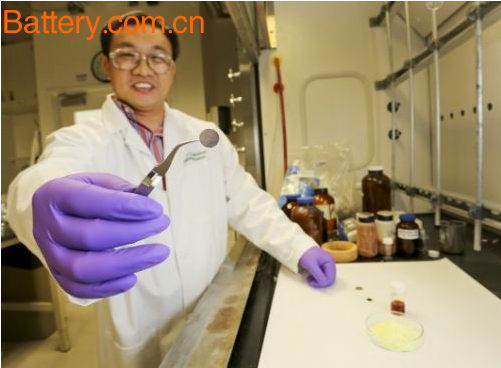
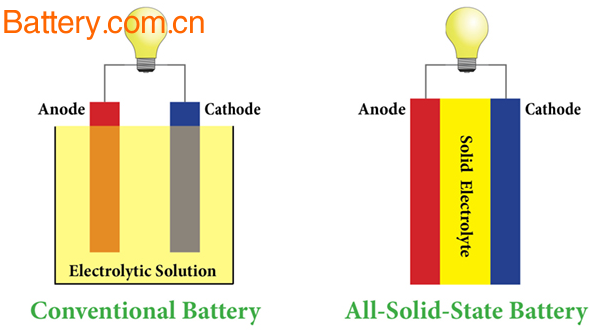
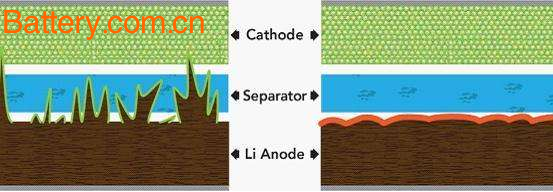
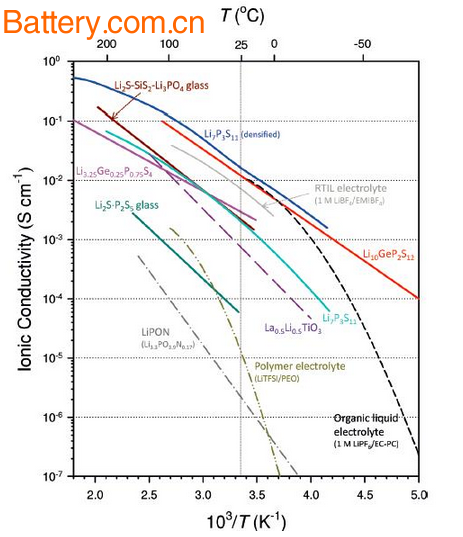

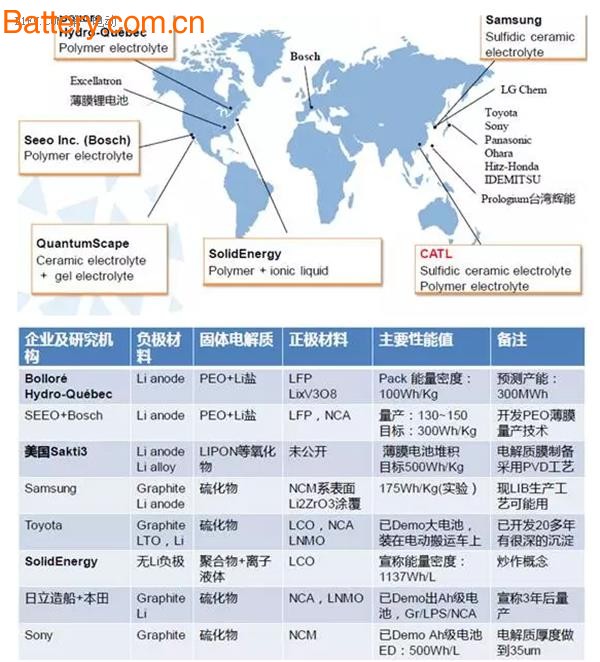
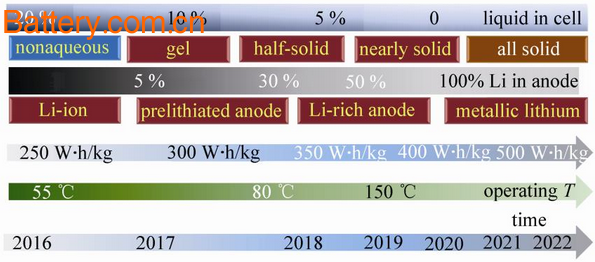







First, the anti-static tape is divided into: Tape Anti-static SMT Splice Tape, all anti-static materials SMT Splice Tape
Second, the anti-static tape surface resistance of 10 to the 6th power of 10 to the 8th power
Third, the stripping voltage is less than 100 V at 30V or so
Fourth,
the anti-static tape are high sticky tape, the original film itself
anti-power technology, not because of anti-static requirements to reduce
the tape's viscosity, the maximum degree of assurance Feida pass rate.
Fifth, SMT ESD Double Splice Tape, SMT Esd Single Splice Tape, Panasonic ESD SMT Splice Tape.
Color: SMT Black ESD SMT Splice Tape / SMT Yellow ESD SMT Splice Tape.